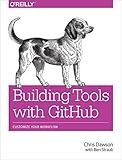Best Web Hosting Tools to Buy in December 2025

Full Stack Web Development for 2025: The Complete Guide to Modern Web Apps



Modern Web Development: A Beginner's Guide to HTML, CSS, Hosting, and SEO



Creating a Website: The Missing Manual



Building Tools with GitHub: Customize Your Workflow



Podcast Planner: Podcast Log Book, Hosting Notebook & Podcasting Journal Logbook for Planning Perfect Podcasts - Gift for Podcasters, Hosts, Producers & Entrepreneurs Men & Women



All My Podcast Shit: Funny Podcast Log Book Planner, Hosting Notebook & Podcasting Journal Logbook for Planning Perfect Podcasts - Gift for Podcasters, Hosts, Producers & Entrepreneurs Men & Women


Laravel is a popular PHP framework that allows developers to build robust and scalable web applications. Linode is a cloud hosting provider that offers virtual servers to deploy applications.
To install Laravel on Linode, follow these steps:
- Set up a Linode server: Sign up for a Linode account and create a new Linode instance. Choose the preferred operating system, such as Ubuntu, CentOS, or Debian.
- Connect to the server: Use SSH to connect to your Linode server. You can use tools like PuTTY (on Windows) or the terminal (on macOS or Linux).
- Update packages: Run the following commands to update the packages on your server:
sudo apt-get update sudo apt-get upgrade
- Install PHP and other dependencies: Laravel requires PHP and some additional libraries. Use this command to install PHP and other required extensions:
sudo apt-get install php7.4 php7.4-cli php7.4-common php7.4-mbstring php7.4-xml php7.4-zip php7.4-mysql php7.4-curl
- Install Composer: Composer is a dependency management tool for PHP. Use these commands to install Composer globally:
sudo curl -sS https://getcomposer.org/installer | php sudo mv composer.phar /usr/local/bin/composer
- Install Laravel: Change to the web directory (/var/www/html) and use Composer to install Laravel:
cd /var/www/html sudo composer create-project --prefer-dist laravel/laravel your-project-name
Replace your-project-name with the desired name for your Laravel project.
- Set file permissions: Adjust the permissions of the Laravel project directory to ensure proper functioning:
sudo chown -R www-data:www-data /var/www/html/your-project-name sudo chmod -R 755 /var/www/html/your-project-name
- Configure your web server: If you're using Apache, create a new virtual host configuration file for your Laravel project:
sudo nano /etc/apache2/sites-available/your-project-name.conf
Add the following contents to the file:
<VirtualHost *:80> DocumentRoot /var/www/html/your-project-name/public <Directory /var/www/html/your-project-name/public> AllowOverride All Require all granted
Save the file and enable the new virtual host:
sudo a2ensite your-project-name.conf
Restart the Apache service:
sudo service apache2 restart
- Access your Laravel application: You can now access your Laravel application by visiting your Linode server's IP address or domain name in a web browser.
That's it! You have successfully installed Laravel on your Linode server and configured it to run your Laravel application.
How to create a Linode account?
To create a Linode account, follow these steps:
- Visit https://www.linode.com/ on your web browser.
- Click on the "Sign Up" button located in the top right corner of the page.
- You'll be directed to the Linode registration page. Fill in the following information: Email address: Provide a valid email address to associate with your Linode account. Password: Create a strong and secure password for your account. Confirm Password: Re-enter the password for confirmation.
- Read and agree to the Linode terms of service and privacy policy by checking the corresponding checkboxes.
- Optionally, you can sign up for Linode's newsletter by checking the corresponding checkbox if interested.
- Click on the "Create Account" button to proceed.
- Linode will send a confirmation email to the provided email address. Open your email inbox and locate the email from Linode.
- Open the email and click on the "Confirm Email Address" button/link.
- You will be redirected to the Linode website, where you can now log in to your newly created account using your email address and password.
Once logged in, you can proceed to set up Linode servers, manage your account settings, and explore the various features and services offered by Linode.
What is the Linode control panel?
The Linode control panel is a web-based interface provided by Linode, a cloud hosting provider. It allows users to manage their Linode cloud servers and perform various tasks such as creating new servers, managing networking and storage, monitoring resource usage, setting up backups, and accessing the console for troubleshooting purposes. The control panel offers an intuitive and user-friendly interface for managing all aspects of a Linode account and server infrastructure.
What is the .env file in Laravel and how to configure it on Linode?
The .env file in Laravel is a configuration file that stores sensitive information such as database credentials, API keys, and other environment-specific settings. It is used to separate configuration variables from the codebase, allowing for easy environment-specific configuration changes.
To configure the .env file on Linode, you can follow these steps:
- SSH into your Linode server using a terminal or SSH client.
- Navigate to the root directory of your Laravel project.
- Create a copy of the .env.example file using the following command: cp .env.example .env
- Open the .env file in a text editor.
- Update the configuration variables according to your Linode server's environment. For example, you may need to update the following variables: APP_URL: The URL of your application. DB_CONNECTION, DB_HOST, DB_PORT, DB_DATABASE, DB_USERNAME, and DB_PASSWORD: Database configuration variables. Any other environment-specific variables specific to your application.
- Save the changes and close the file.
After configuring the .env file, you may need to clear your Laravel application cache to reflect the new configuration. You can do this by running the following command in the terminal:
php artisan cache:clear
That's it! Your Laravel application should now be configured with the .env file on your Linode server.
How to configure the database connection for Laravel on Linode?
To configure the database connection for Laravel on Linode, you need to edit the .env file in your Laravel project. Here are the steps to follow:
- Log in to your Linode server via SSH.
- Navigate to the root directory of your Laravel project by using the cd command.
- Run the following command to edit the .env file: nano .env. If the .env file does not exist, you can create a new one by copying the .env.example file: cp .env.example .env.
- Update the following lines in the .env file with your database connection information: DB_CONNECTION: Set the database driver, usually to mysql for MySQL or pgsql for PostgreSQL. DB_HOST: Set the database host, usually to 127.0.0.1. DB_PORT: Set the database port, usually 3306 for MySQL or 5432 for PostgreSQL. DB_DATABASE: Set the name of your database. DB_USERNAME: Set the username for your database. DB_PASSWORD: Set the password for your database.
- Save the changes by pressing Ctrl + X, then Y, and then Enter.
- Run the following command to generate a new application key: php artisan key:generate.
- Finally, clear the application cache by running: php artisan config:clear.
Your Laravel application should now be configured with the database connection specified in the .env file.
